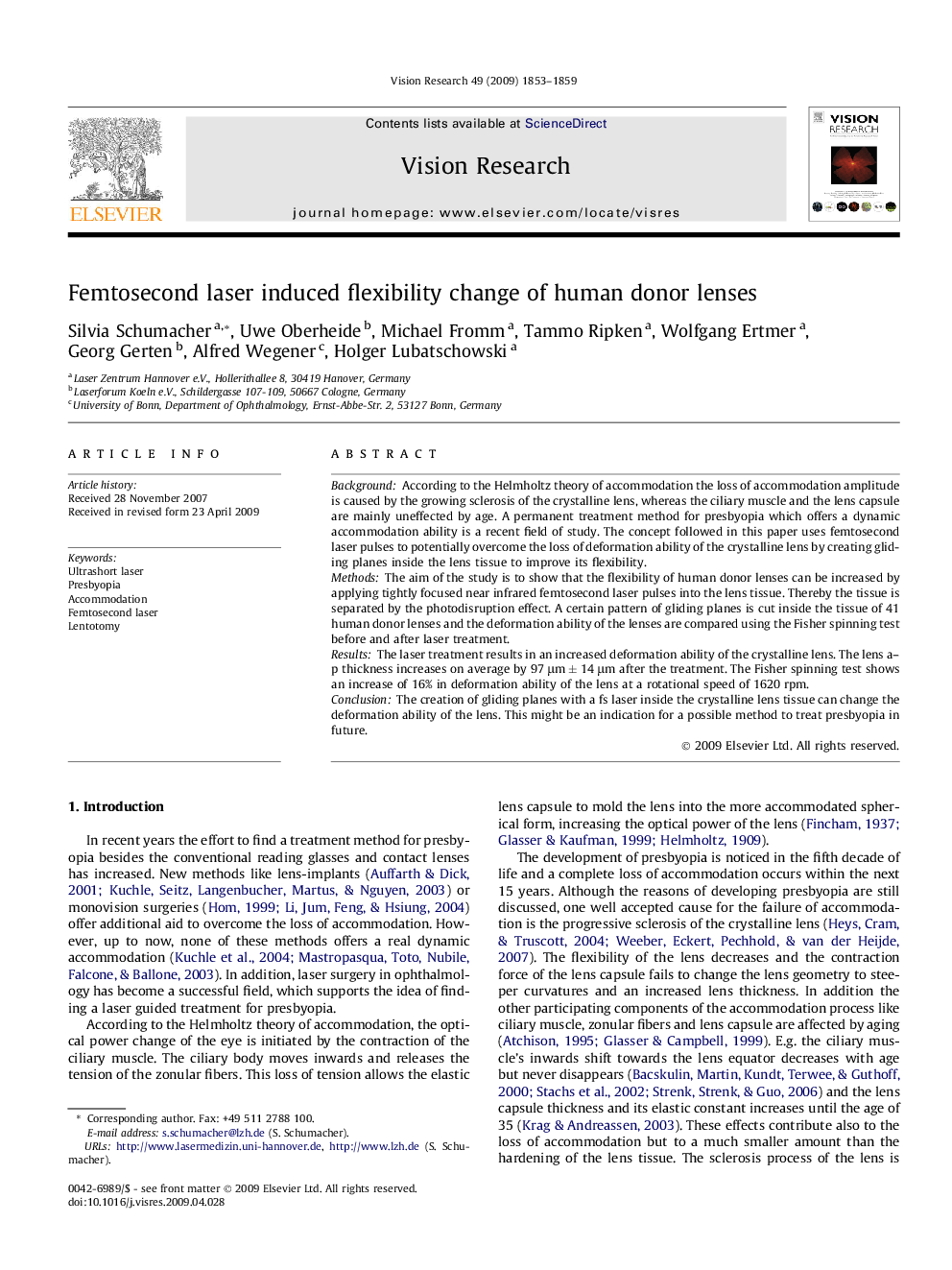| Article ID | Journal | Published Year | Pages | File Type |
|---|---|---|---|---|
| 4035265 | Vision Research | 2009 | 7 Pages |
BackgroundAccording to the Helmholtz theory of accommodation the loss of accommodation amplitude is caused by the growing sclerosis of the crystalline lens, whereas the ciliary muscle and the lens capsule are mainly uneffected by age. A permanent treatment method for presbyopia which offers a dynamic accommodation ability is a recent field of study. The concept followed in this paper uses femtosecond laser pulses to potentially overcome the loss of deformation ability of the crystalline lens by creating gliding planes inside the lens tissue to improve its flexibility.MethodsThe aim of the study is to show that the flexibility of human donor lenses can be increased by applying tightly focused near infrared femtosecond laser pulses into the lens tissue. Thereby the tissue is separated by the photodisruption effect. A certain pattern of gliding planes is cut inside the tissue of 41 human donor lenses and the deformation ability of the lenses are compared using the Fisher spinning test before and after laser treatment.ResultsThe laser treatment results in an increased deformation ability of the crystalline lens. The lens a–p thickness increases on average by 97μm±14μm after the treatment. The Fisher spinning test shows an increase of 16% in deformation ability of the lens at a rotational speed of 1620 rpm.ConclusionThe creation of gliding planes with a fs laser inside the crystalline lens tissue can change the deformation ability of the lens. This might be an indication for a possible method to treat presbyopia in future.
